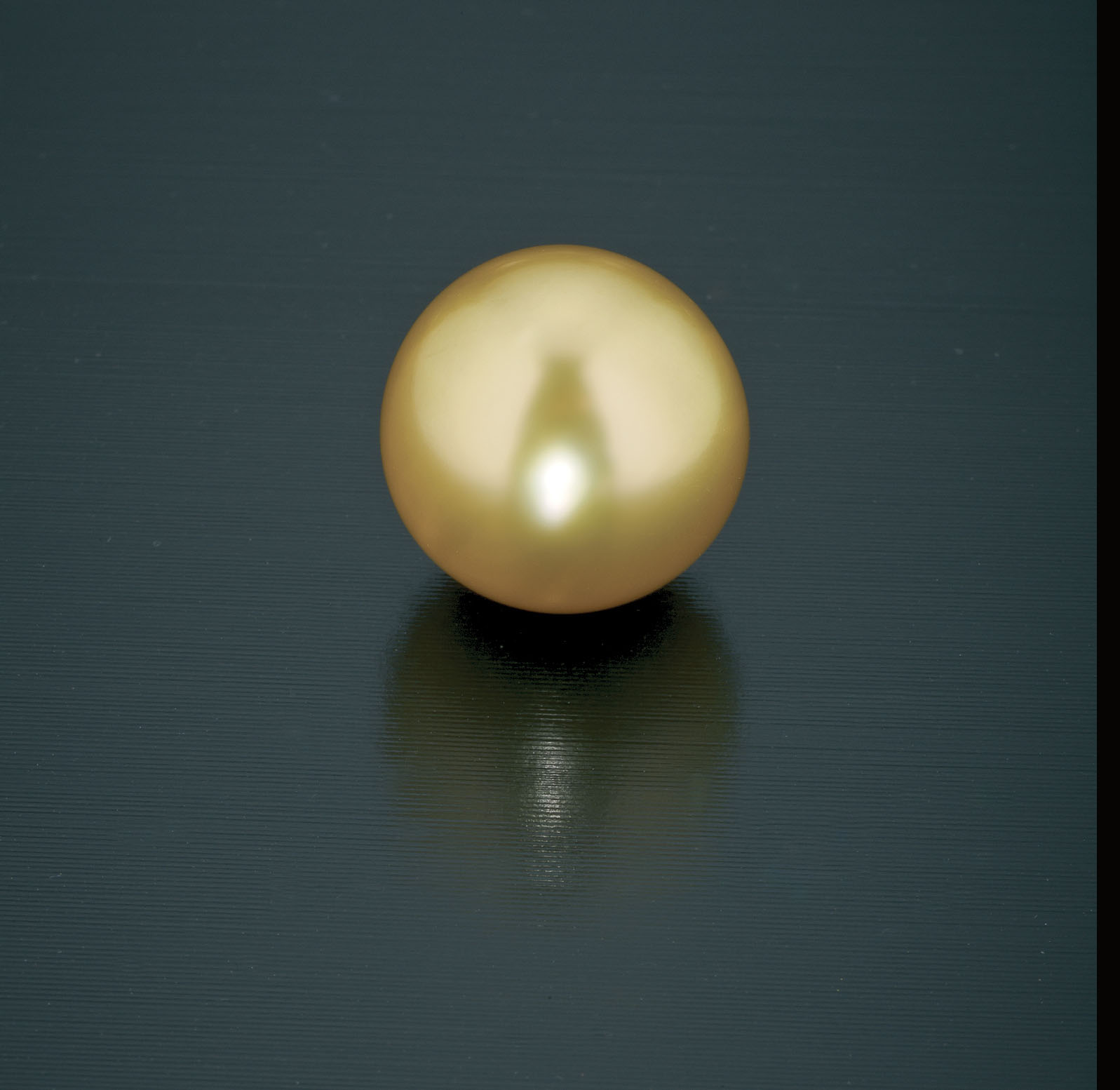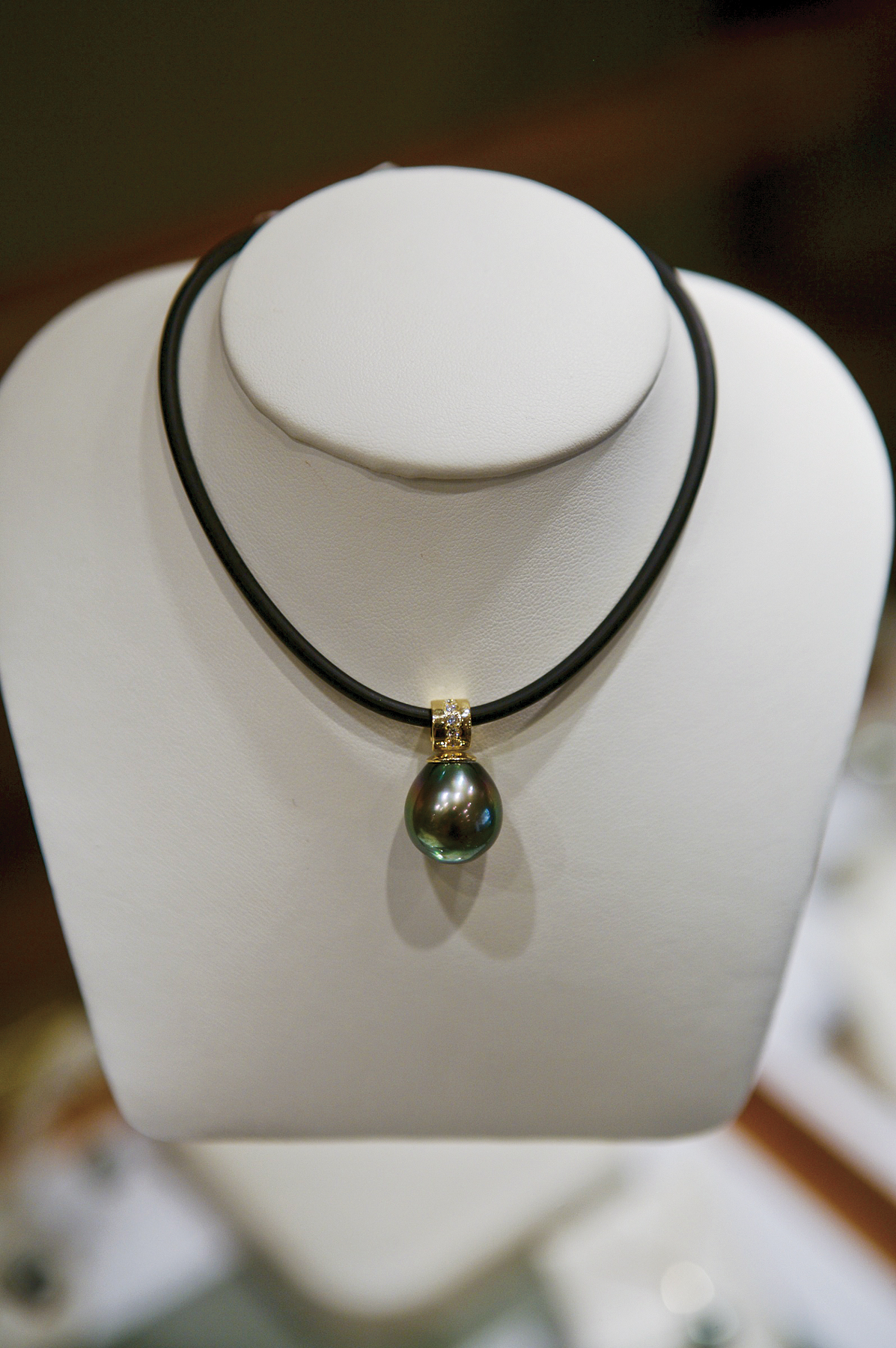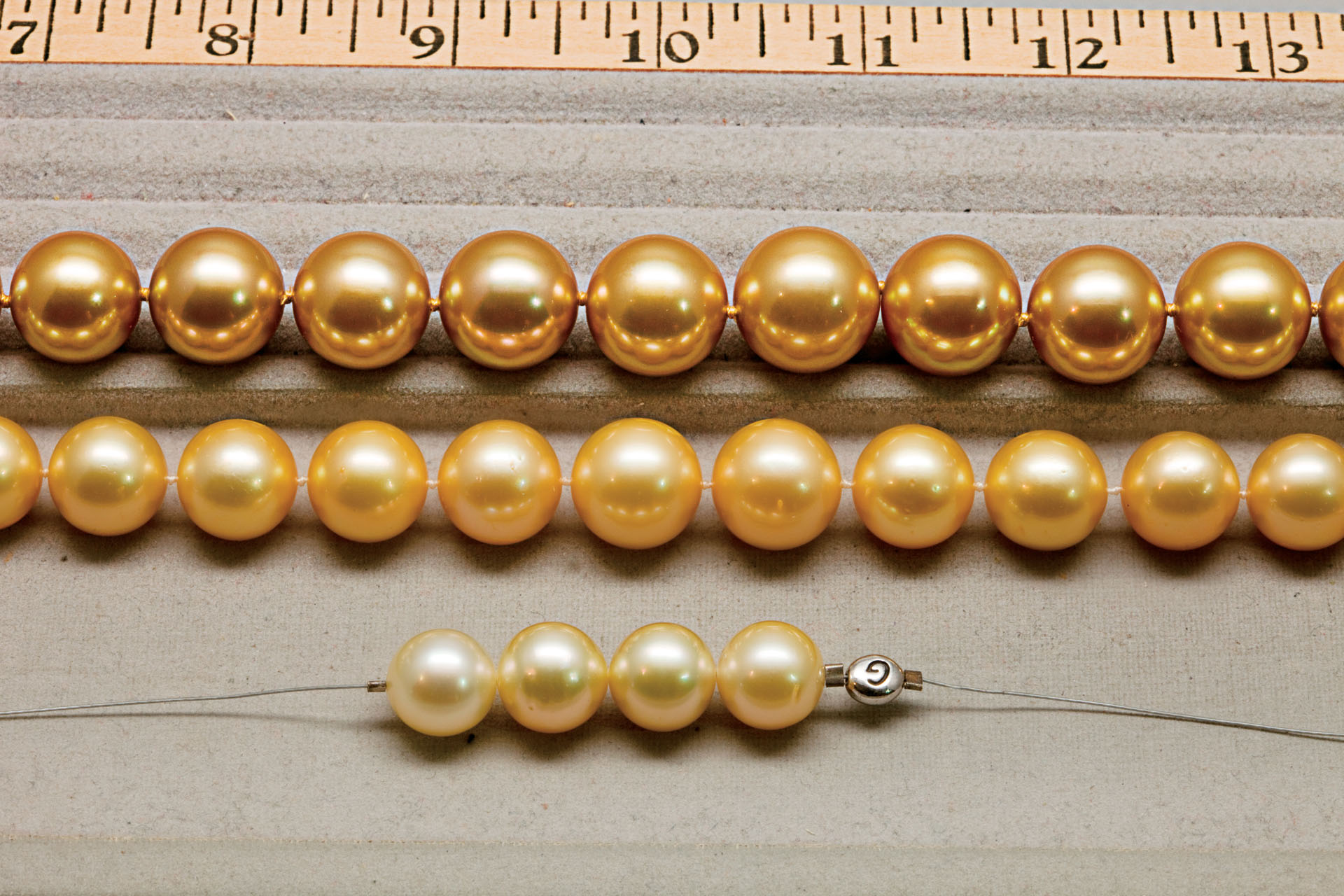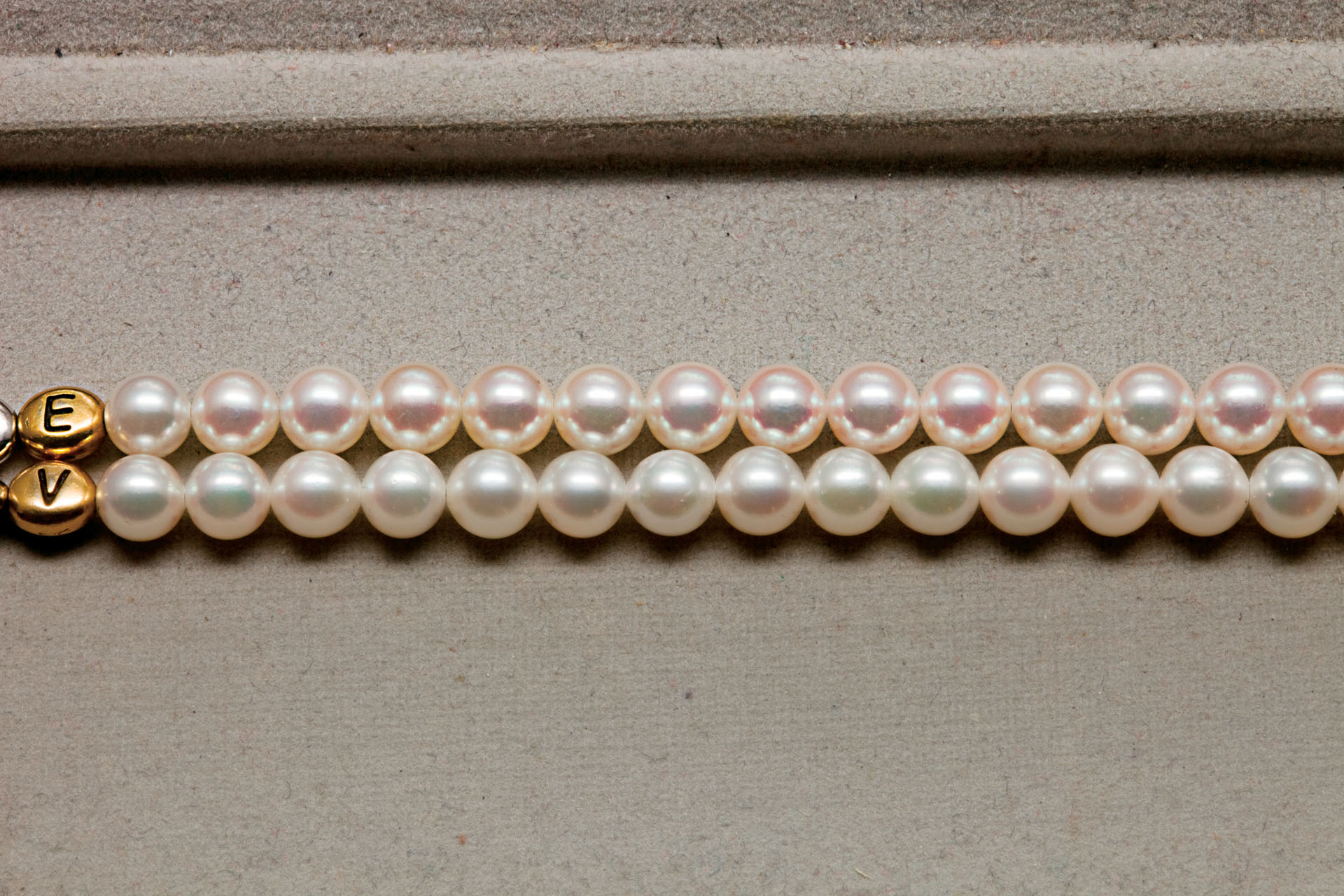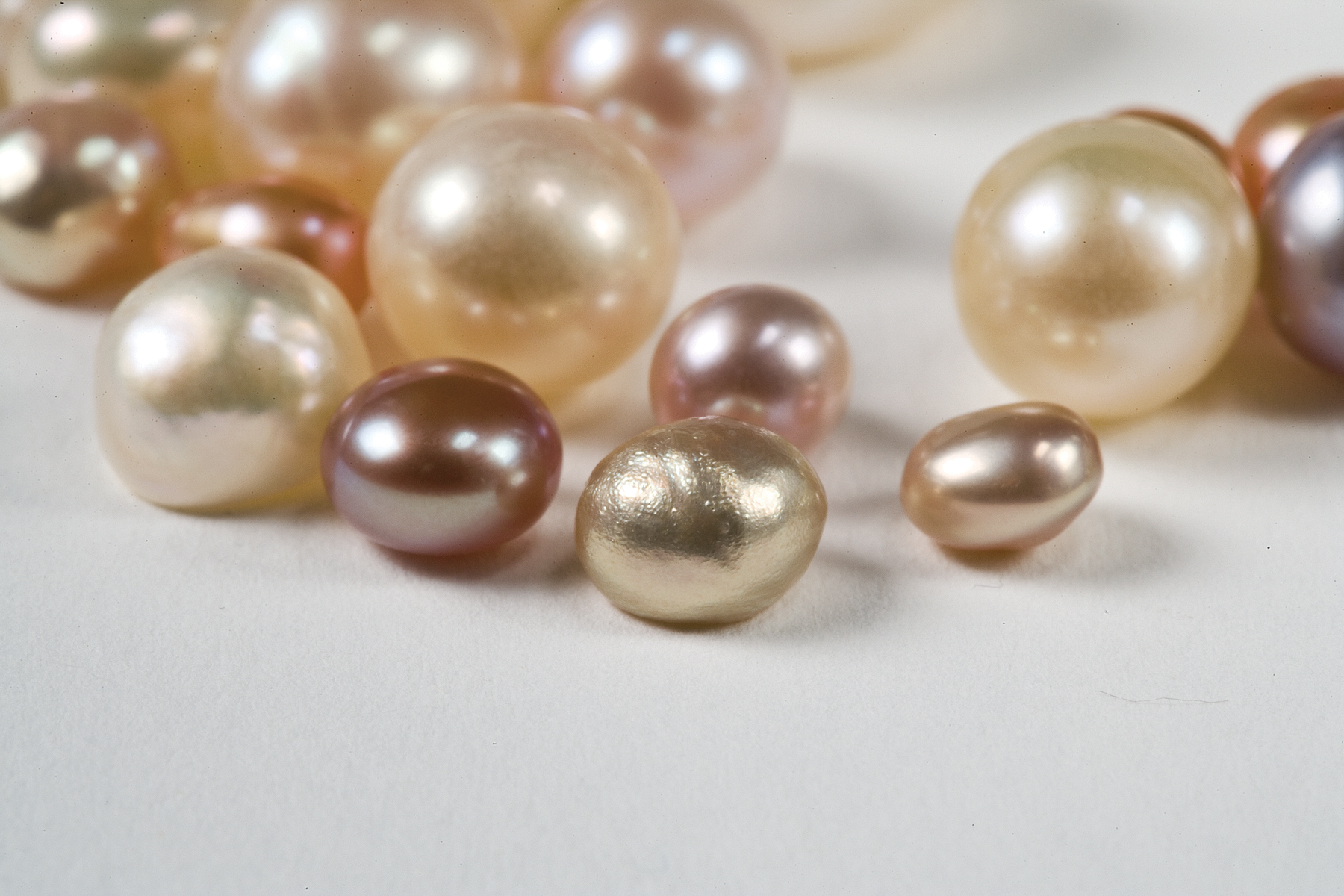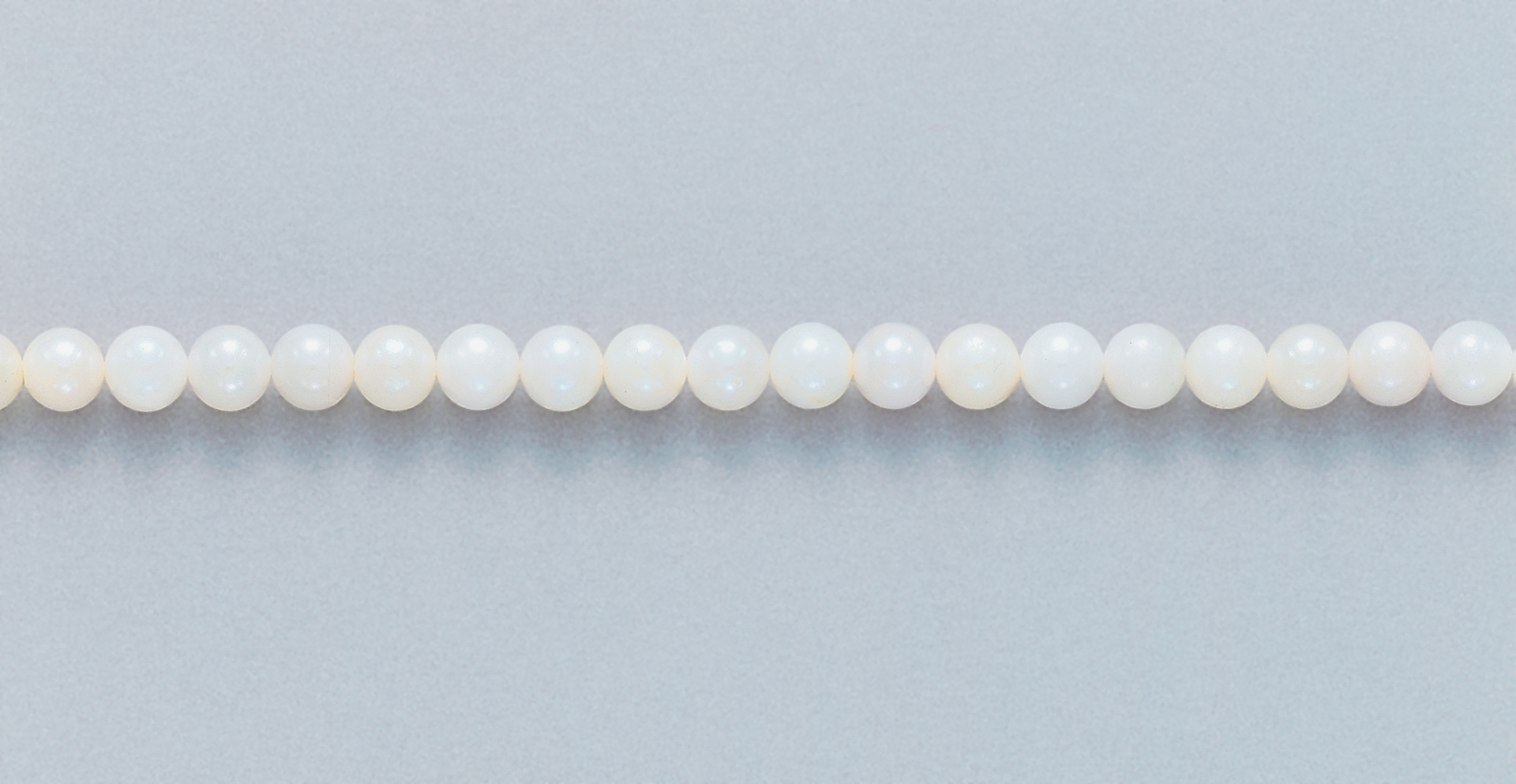A soft-bodied marine animal with one or two shells.
Mollusk with a shell composed of two nearly equal parts joined by a hinge.
A single-shelled mollusk without a hinge.
Class of one-shelled mollusks that includes land and sea snails.
Click play button for pronunciation.
A pearl-producing two-shelled freshwater mollusk.
natural pearls
A pearl formed without human assistance.
cultured pearls
A pearl formed as the result of human intervention in the formation process.
Click play button for pronunciation.
Click play button for pronunciation.
The organ that lines the mollusk’s shell, encloses its soft body, and contains the
cells that form pearl sacs and secrete nacre.
mother-of-pearl
The nacreous layer on the inside of a mollusk’s shell.
The natural substance produced by a mollusk to make pearls and mother-of-pearl.
The organic “glue” in nacre that holds aragonite platelets together.
A crystallized form of calcium carbonate found in nacre.
Calcium carbonate with a crystal structure that’s different from aragonite.
luster
The appearance of a material’s surface in reflected light.
Rainbow iridescence seen in some natural and cultured pearls and in mother-of-pearl.
An ordered system for the classification of animals and plants.
Click play button for pronunciation.
Click play button for pronunciation.
Click play button for pronunciation.
Click play button for pronunciation.
Click play button for pronunciation.
pinctada margaritifera cumingii
Click play button for pronunciation.
Click play button for pronunciation.
Click play button for pronunciation.
blister pearls
A pearl that forms over a naturally occurring or implanted irritant on the inside
of a mollusk’s shell.
Click play button for pronunciation.
Click play button for pronunciation.
Click play button for pronunciation.
Click play button for pronunciation.
Click play button for pronunciation.
Click play button for pronunciation.
Click play button for pronunciation.
The reproductive organ that produces eggs in females and sperm in males.
Click play button for pronunciation.
Click play button for pronunciation.
calcareous concretions
A non-nacreous natural pearl.
flame structure
Optical phenomenon created in some non-nacreous pearls when intersecting groups of
crystals interact with light.
Click play button for pronunciation.
whole pearls
A natural or cultured pearl formed within a mollusk but separate from its shell.
Insertion of a bead and a piece of mantle tissue into a mollusk to induce it to form
a cultured pearl.
bead nucleus
A bead used as the core of a cultured pearl, usually made from a freshwater mussel
shell.
tissue nucleation
Insertion of a piece of mantle tissue into a mollusk to induce it to form a cultured
pearl.
Click play button for pronunciation.
value factors
Characteristics used to assess the beauty, quality, and value of a pearl.
uniform strand
A necklace featuring pearls that are very nearly the same size.
graduated strands
A necklace with the largest pearl in the center and progressively smaller pearls approaching
the clasp.
Click play button for pronunciation.
circled pearl
A pearl with one or more grooved or ridged rings around its circumference.
hue
Your first impression of an object’s basic color.
tone
The degree of darkness or lightness of a color.
A color’s strength or intensity.
Click play button for pronunciation.
Click play button for pronunciation.
Click play button for pronunciation.
Click play button for pronunciation.
blinking
Scattered reflections that indicate the presence of a bead nucleus when a pearl is
rolled under a concentrated light source.
Nacre thickness measured from a round or near-round cultured pearl’s center to its
outer surface.
Directing a concentrated light source through a pearl to look for the presence of
a bead nucleus.
